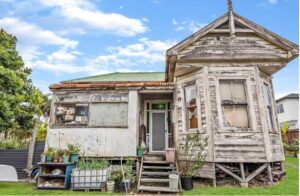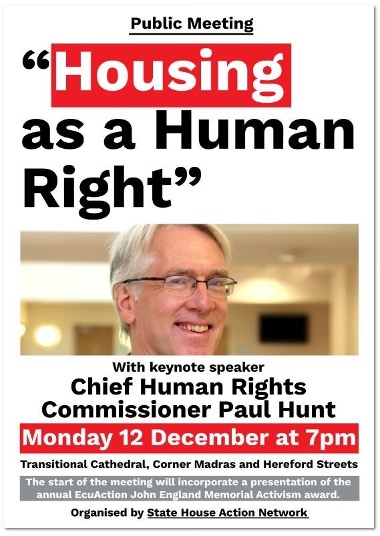Between now and the early parts of the New Year we will carefully analyse how we got to our current disastrous situation with housing. This week I will set the scene by mercilessly stealing from this magnificent article on housing by Rebecca Macfie https://northandsouth.co.nz/2021/08/16/nz-housing-crisis-the-great-divide/.
I don’t think I have read a better article in the media about the causes of our housing crisis which has occurred incrementally over decades. Both Labour and National should hang their heads in shame. I applaud Phil Twyford for creating the Ministry of Housing and Urban Development and installing in this Ministry all central government programmes in one place.
Here are some quotes from the article:
How my parents owned their own home:
From the late 1950s until 1986, families were also able to capitalise the family benefit, a universal payment for each child. This meant that the future value of the benefit could be paid in advance towards a deposit on a first home. For families with no savings and low wages, it was the door to housing security.
Over the decades there had been governments (mostly National) with a penchant for selling state houses, and governments (mostly Labour) with a penchant for building them. But over time the portfolio grew, and by 1991 the number reached almost 70,000. That’s 6000 more state rentals than New Zealand has today, even though our population is 46 per cent larger.
Enter the force of neo-liberalism:
In 1991, the newly elected National government, led by Jim Bolger, announced the most radical housing reforms since Savage launched the state-house building programme in the shadow of the Great Depression. The state would retreat, and the private sector would fill the gap. The forces of supply and demand would work their magic, and everything would be fairer and more efficient.
Government mortgages that had financed low-income families into houses were sold off in a $2.4 billion programme of privatisation. The state house portfolio was turned into a profit-making operation called Housing New Zealand. Income-related rents for state houses were replaced with market rents.
A single form of assistance was introduced for those who couldn’t afford market rents, along the lines of the voucher system Treasury wanted. The new accommodation supplement would cover 65 per cent of the cost that struggling families couldn’t afford; it was up to them to come up with the rest. National’s minister of housing, John Luxton, said this would be an incentive for families to keep their costs down.
Was the Bolger government warned about the impact of the reforms:
There had been plenty of advice that the accommodation supplement was a bad idea. In 1988, the National Housing Commission had warned that such a system would “add little to the total housing supply while allowing private landlords and property speculators to make even higher charges for a non-expanding supply of housing”, which would in turn “raise the purchase price of land and rented property”.
The Salvation Army’s Major Campbell Roberts served on a working group set up by the new government to analyse the accommodation supplement proposal. It, too, concluded that the cost would be enormous and the scheme would do nothing to add to housing supply. The group was disbanded, its report sank without trace, and the government pushed ahead.
The reforms had collapsed a once multi-pronged housing system into a single blunt tool — the accommodation supplement. As predicted, not only did it fail to stimulate new housing supply, the cost blew out, doubling to almost $800 million between 1994 and 1998. By 2020 that cost was budgeted at $2.4 billion.
What has happened to the housing market since the “reforms”:
Since the late 1980s, investors have increased the number of houses they own by 191 per cent, and owner-occupiers by only 37 per cent. Housing in New Zealand is no longer about homes, dignity and security. It is a financial commodity.
The accommodation supplement remains a central plank of our housing policy, despite failing for 30 years to live up to Luxton’s promise of fairness and efficiency
Furthermore, investors have not increased their portfolios by building new homes. Instead, they have done so by buying up existing houses.
The state has been shunted out of the way and the private sector unleashed, but it turned out that the market wasn’t interested in building houses for poor people and those on moderate wages. Instead, the building industry followed the money up-market — by 2014, around 60 per cent of new houses were in the most expensive quartile.
The researchers have found:
A research team including Saville-Smith and Charles Waldegrave of the Family Centre research agency has revealed the consequences (of the reforms). Before the early 1990s, around third of all new house construction was low-cost homes, in the bottom quartile of value. A very small proportion were high-end luxury houses. After the reforms, the proportion of low-cost construction collapsed. By 1996 it was down to about 15 per cent, and by 2014 it was barely 5 per cent.
Recent research by Saville-Smith and Ian Mitchell shows 350,000 households who receive (the housing supplement) still pay more than 30 per cent of their income on rent — the benchmark for housing stress — and 130,000 pay more than half.
Their research showed “This is a profound transformation by which the housing market has, in reality, become a property market.”
Before the 1990s, governments of both parties had financed the construction of modest houses for ordinary people — building state homes, funding granny flats, writing concessionary first-home mortgages. After the 1991 reforms this source of capital almost vanished.
Where we have got to as a society:
- After the 1991 reforms, landlords quickly realised that the accommodation supplement was a massive new subsidy that would benefit them, and that the move to market rents in state houses would push more tenants into private rentals.
- Investors had fled the share market after the 1987 crash, and residential property looked like a safe bet by comparison.
- Commercial banks that had been liberated from stifling regulation by Roger Douglas were eager to pour credit into the market.
What sort of people are now homeowners:
Using the word “investor” to describe people who have bought all these houses is something of a misnomer, however. In all likelihood the great majority are more accurately called speculators. The evidence for this lies in recent research by Michael Rehm, a University of Auckland property lecturer, and PhD student Yang Yang. They looked at 117,000 rental property purchases in Auckland between 2002 and 2016 to see if these deals stacked up in any conventional investment sense — that is, whether after paying interest and other costs and receiving the rent, there was a fair rate of return. They found that more than 99 per cent of purchases would not have met that threshold, and that therefore the buyers were speculating in the expectation of tax-free capital gains. Auckland’s market, they concluded, “is a politically condoned, finance-fuelled casino.”

What are our challenges and how can they be funded:
In their research on the accommodation supplement, Kay Saville-Smith and Ian Mitchell calculated that if the $186 million a year going to tenants with household incomes of over $100,000 was channelled for those families into progressive home ownership, in three years it could stimulate the construction of $1.6 billion of low-cost housing, lift these households into independence and relieve stress on the rental market.

Thirty-three years ago the National Housing Commission noted that our collective abhorrence of poverty was a key defence against housing failure. As we stand now at the cusp, the question for those of us on the winning side of the class divide is whether we can rediscover that abhorrence of poverty, or if we are content to watch our wealth accumulate while the emergency compounds into a calamitous future of exclusion, desperation, and discontent.
Leave a Reply